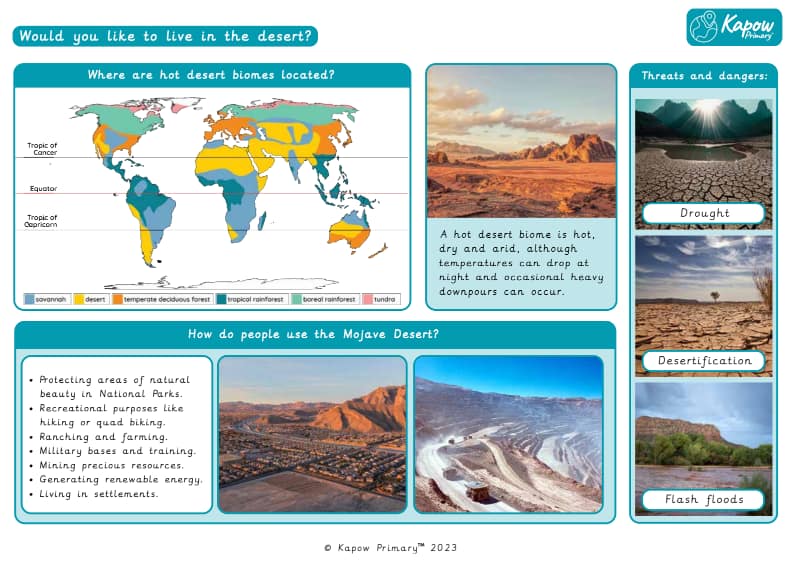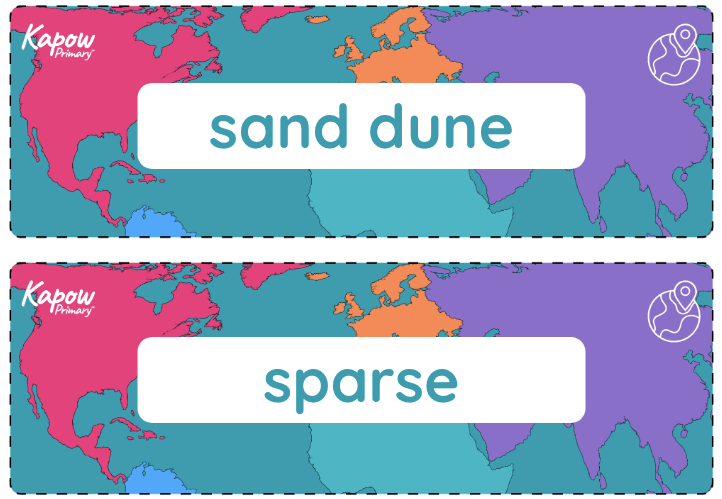Unit outcomes
Pupils who are secure will be able to:
- Identify the lines of latitude where hot desert biomes are located.
- Describe the characteristics of a hot desert biome.
- Locate the largest deserts in each continent.
- Describe ways the Mojave Desert is used.
- Name and describe the physical features found in a desert.
- Identify how humans use the desert.
- Explain how human activity may contribute to the changing climate and landscape of a desert.
- Recognise that the Mojave Desert has a different time zone to the UK.
- Describe some of the threats to deserts.
- Give the benefits and drawbacks of living in a desert environment.
- Identify characteristics of two contrasting biomes and compare land use.
- Discussing if a desert environment is hospitable and why.
Lessons 2 and 6 require a device (one between two).
Suggested prior learning
What is life like in the Alps?
Get startedLessons
Lesson 1: What is a hot desert biome?
Lesson 2: Where are deserts located?
Lesson 3: What physical features are found in a desert?
Lesson 4: How can people use deserts?
Lesson 5: What are the threats to deserts?
Lesson 6: Would you like to live in the desert?
Key skills
- Locating more
This content is for subscribers only. Join for access today.
Key knowledge
- To know
This content is for subscribers only. Join for access today.
Key vocabulary
agriculture
airstrip
This content is for subscribers only. Join for access today.
Related content
Unit resources
Subject resources
This content is for subscribers only. Join for access today.
Cross-curricular opportunities
English: Spoken language, writing – composition
Science: evolution and inheritance, states of matter, earth and space, living things and their habitats
Mathematics: number – number and place value, statistics
Computing



